If you’re looking to turn your indoor space with miniature garden, then growing low-light terrarium plants is an easy option.
As these plants can survive without direct sunlight, you can use them to decorate the leftover corner of your room.
Let’s be clear, low-light doesn’t mean no light. You must provide some amount of light to carry photosynthesis.
But, one thing is confirmed. You don’t have to spend lots of time or allot much space like other houseplants.
I don’t mean that you should stop growing indoor plants that produce blooms or known to purify air.
With terrarium plants let you engage closely with miniature ecosystem and it’s a great way to add natural aesthetic to your home.
Instead of writing an exhaustive list of plants, I prefer to give a bunch of best plants that doesn’t demand much care.
Before proceeding let’s understand about low-light.
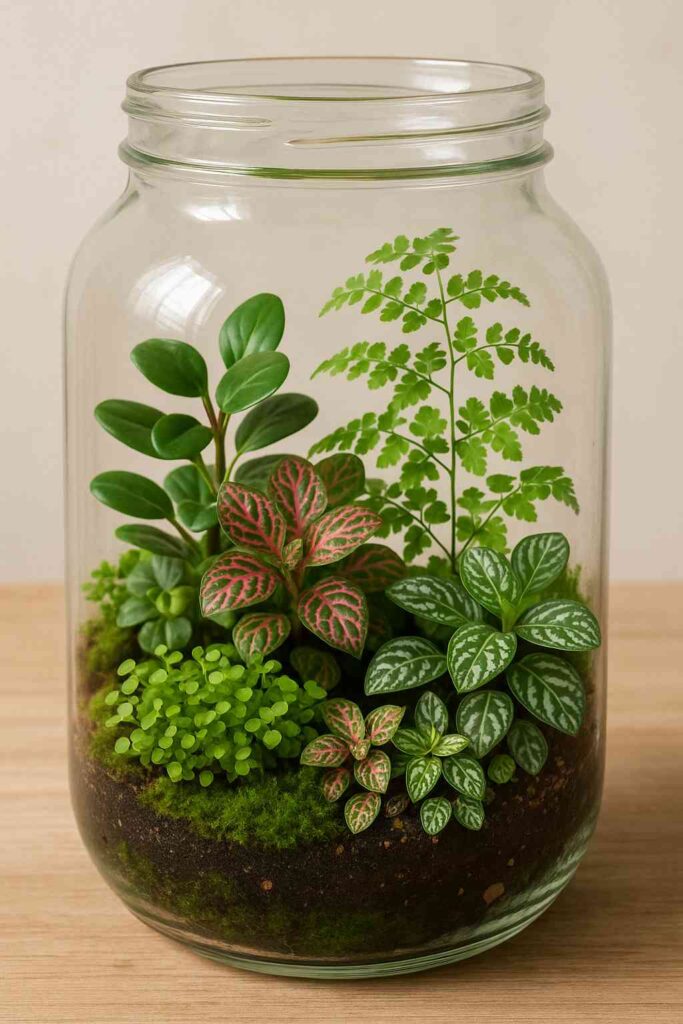
What is low light?
Low light for houseplants means those dimmer spots in your home that don’t get much natural sunlight—like north-facing rooms, areas blocked by trees or buildings, or corners far from windows.
It’s not complete darkness, just those spaces where you’d need to turn on a lamp to read comfortably during the day.
How to test for low light?
The easiest way is distance—if your plant is more than 6 feet from a window, it’s probably low light.
Try the shadow test too: during the day with lights off, hold your hand a foot above a surface. Sharp shadows mean bright light, blurry shadows mean medium light, and barely any shadow means low light.
North-facing windows give the least light, while east-facing windows provide gentle morning sun. South and west-facing windows are the brightest (unless blocked by something outside).
17 Best Low Light Terrarium Plants
Low-light terrarium plants are ideal for creating miniature indoor gardens that thrive without direct sunlight.
These plants naturally adapt to shady environments, making them perfect for enclosed or partially enclosed terrariums placed away from bright windows.
1. Peperomia Plant

Peperomia is perfect for terrariums thanks to its compact size, low-light tolerance, and love for humidity. Growing just 6–12 inches tall, it thrives in tight, filtered-light spaces under a terrarium canopy.
Its thick, succulent leaves come in a variety of shapes and colors—from deep green to silver, red, and variegated pinks—adding vibrant texture and contrast.
Easy to care for and drought-tolerant, Peperomia only needs occasional watering and light misting, making it a fuss-free, visually striking addition to any terrarium setup.
2. Pilea
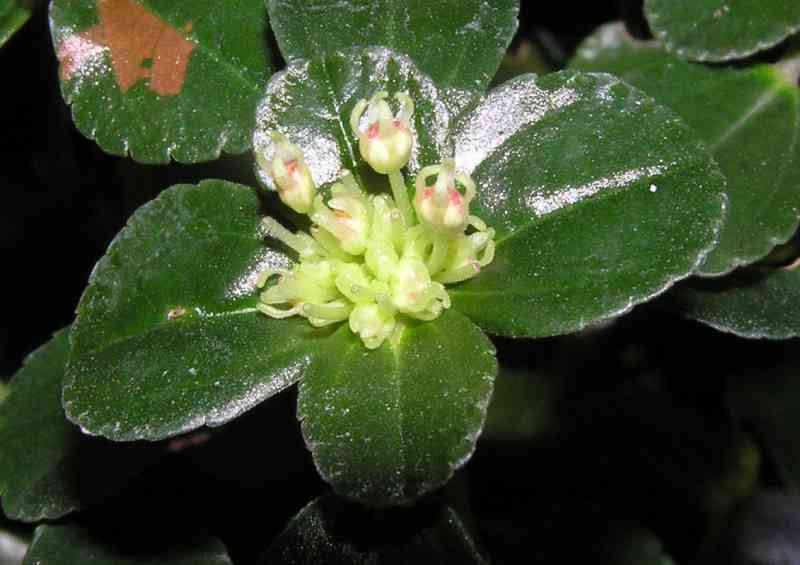
With its playful, coin-shaped leaves, Pilea brings a cheerful vibe to any terrarium. This compact, fast-growing plant thrives in bright, indirect to low light, making it ideal for enclosed environments.
Pilea prefers lightly moist soil and good airflow, so make sure your terrarium isn’t overly sealed.
Varieties like Pilea depressa or the popular Pilea peperomioides offer charm in small doses, spreading gently while adding lush greenery. Just pinch back any leggy growth to keep its neat, bushy form.
3. Nerve Plant (Fittonia)
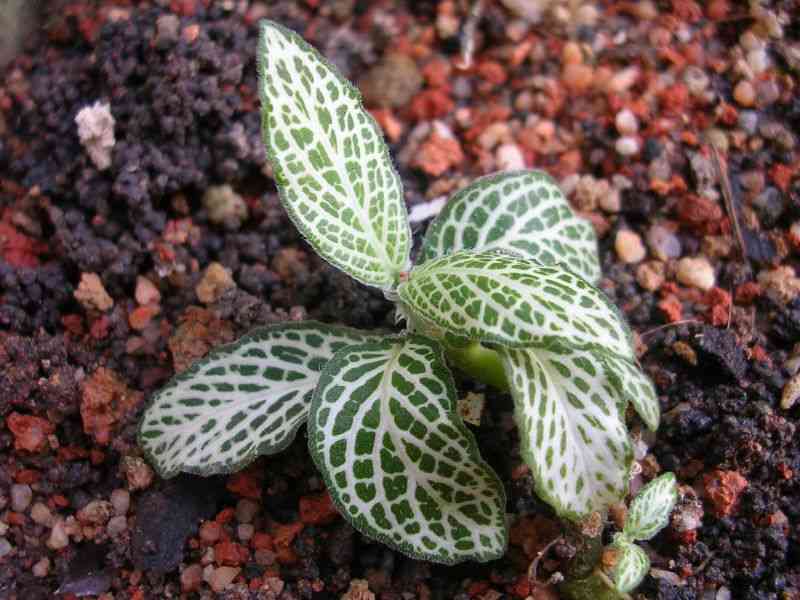
If you’re after bold color and fine texture, Fittonia—commonly called Nerve Plant—is a standout. Its striking veined leaves come in pink, red, or white, set against a deep green backdrop.
Perfectly suited to the high humidity of terrariums, Fittonia prefers consistently moist soil and filtered light. It does best in closed containers, where its tropical needs are met effortlessly.
With its low-growing habit and vivid contrast, this plant adds energy and visual flair without overtaking the scene.
Also Read: 15 Pothos Companion Plants
4. Ferns (e.g., Maidenhair, Button Fern)

Soft, lacy, and delicate—ferns like Maidenhair and Button Fern thrive in terrariums where humidity stays high. These ferns enjoy indirect light and consistently moist (not soggy) soil.
The fine foliage of Maidenhair or the compact curls of Button Fern create graceful movement and texture inside a glass enclosure.
While they do need regular misting, their beauty makes the care worth it. They bring a lush, woodland feel to your terrarium and pair beautifully with mosses and smaller plants.
Check this: 18 Houseplants with Red and Green Leaves
5. Moss (Sheet Moss, Cushion Moss)
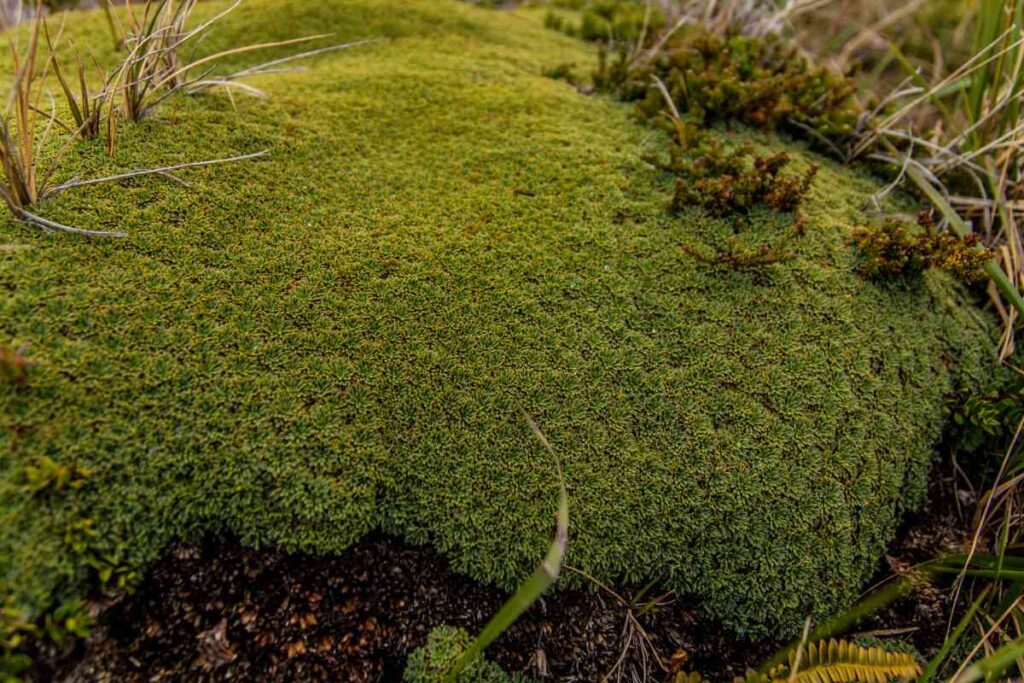
Low-growing and moisture-loving, mosses like Sheet Moss and Cushion Moss are terrarium essentials. They act as a living carpet, holding humidity while adding a soft, naturalistic look.
Moss doesn’t need much light—just gentle, indirect light will do. It thrives in closed terrariums where moisture stays constant. There’s no need for soil; moss attaches to rocks, driftwood, or the terrarium floor.
Ideal for ground cover or aesthetic layering, moss adds that fresh, forest-floor charm to your tiny ecosystem.
6. Spider Plant

Looking for a hardy, forgiving addition? The Spider Plant fits the bill. Its arching green-and-white striped leaves look elegant cascading over the sides of open terrariums.
While it’s more commonly seen in hanging pots, dwarf varieties can adapt well to terrarium life—especially if airflow is sufficient. Spider Plants prefer moderate light and occasional watering.
Bonus: they produce baby “spiderettes” that can be propagated or left to grow, giving your setup a playful, dynamic look over time.
7. English Ivy

Elegant and trailing, English Ivy brings classic charm to terrariums—especially in vertical or hanging layouts.
Its small leaves and vining habit let it weave around rocks and driftwood beautifully.
Ivy enjoys moderate to low light and slightly moist soil. It benefits from occasional trimming to keep it from taking over the space.
Because it loves humidity, a closed or semi-closed terrarium is ideal. With minimal effort, English Ivy adds a touch of wild greenery to your mini garden.
8. Baby Tears (Soleirolia)
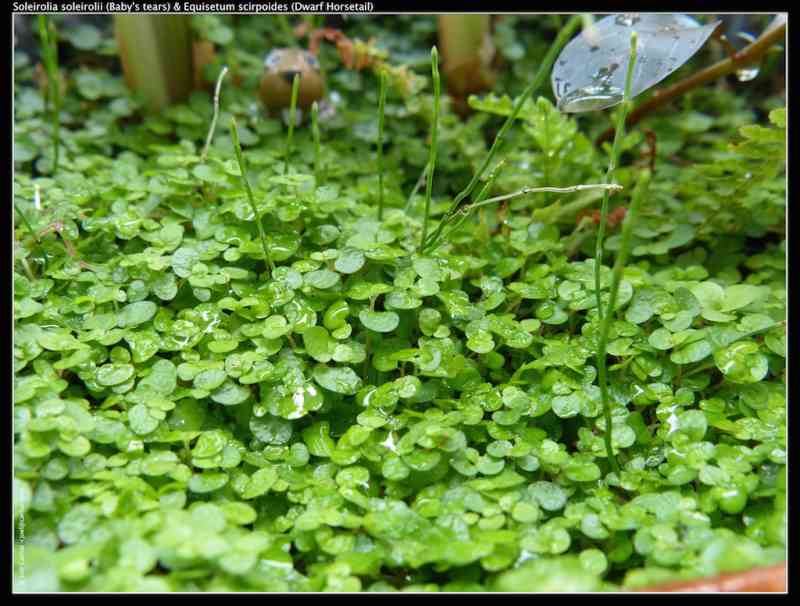
This plant lives up to its delicate name. Baby Tears forms a dense, cascading mat of tiny green leaves that looks like living lace. It thrives in warm, humid conditions with gentle light—perfect for closed terrariums.
Moist soil is key, but avoid waterlogging. Baby Tears spreads quickly, so trim it back as needed to prevent it from covering everything.
Whether draping over stones or forming a soft ground cover, it brings softness and charm to any terrarium landscape.
9. Aluminum Plant (Pilea cadierei)

The Aluminum Plant dazzles with its metallic-silver patterns splashed across deep green leaves. It stays compact, typically under 12 inches tall, and appreciates the moist, humid environment of a terrarium.
Give it low to medium light and keep the soil slightly damp—not soggy. Its bold foliage adds a splash of brightness and texture among other green plants.
A favorite for low-light setups, Pilea cadierei is easy to care for and makes a striking visual impact in small spaces.
10. Snake Plant (Sansevieria – dwarf varieties)
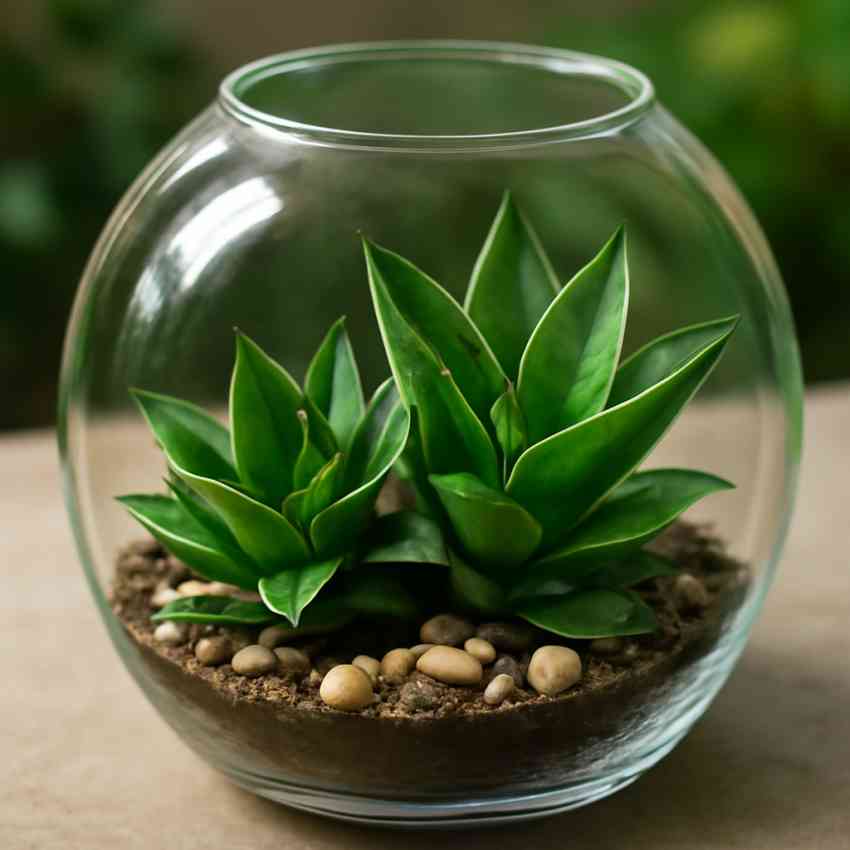
Tough, sculptural, and nearly indestructible—dwarf Snake Plants are a terrarium-ready version of the houseplant classic. These slow growers thrive in low light, dry conditions, and tight spaces.
Their upright, architectural leaves—sometimes with yellow or silver striping—bring height and a bold vertical element.
Because they’re drought-tolerant, Snake Plants do better in open or partially open terrariums with excellent drainage. If you want structure, durability, and minimal care, this plant checks all the boxes.
11. Chinese Evergreen (Aglaonema)

Chinese Evergreen is a slow-growing beauty with broad, patterned leaves ranging from green to silver, pink, or red, depending on the variety. Its tolerance for low light and love of humidity make it terrarium-ready, especially for larger glass containers.
It prefers evenly moist soil and steady warmth—ideal for closed or semi-closed setups.
With minimal care, Aglaonema provides a tropical touch and bold color variation, standing out among finer-textured plants and giving your terrarium a lush, exotic feel.
12. ZZ Plant (Zamioculcas zamiifolia – small cultivar)

Small ZZ plant cultivars are practically made for low-maintenance terrariums. Their thick, glossy, dark green leaves grow in tidy, upright stalks, giving structure without overcrowding.
ZZ plants tolerate low light and dry conditions like champs, making them ideal for open terrariums or those with poor airflow. Water sparingly—their rhizomes store moisture well.
While slow-growing, their polished appearance adds elegance. For anyone who forgets to water or lacks bright spots, ZZ is a resilient gem with minimalist style.
13. Philodendron (Heartleaf)

Trailing Heartleaf Philodendron is a classic for good reason—it’s graceful, easy-going, and adapts beautifully to terrariums. Its deep green, heart-shaped leaves drape softly over the sides of containers or wrap around rocks and supports.
This plant enjoys low, indirect light and lightly moist soil, thriving in humid setups. It grows steadily without being invasive, and occasional pruning keeps it looking tidy.
Ideal for a romantic, jungle-like vibe, this philodendron adds depth and movement to your terrarium landscape.
14. Prayer Plant (Maranta)

Maranta, or Prayer Plant, offers a fascinating mix of color and motion. Its oval leaves feature striking vein patterns in red, pink, or white—and they fold upward at night, like praying hands.
A perfect fit for humid, low-light terrariums, Maranta prefers moist soil and good drainage.
It’s compact and low-growing, so it won’t overpower your setup. The combination of visual interest and interactive leaf behavior makes this plant a living piece of art in any closed terrarium.
15. Cast Iron Plant (Aspidistra elatior)

True to its name, the Cast Iron Plant is incredibly tough—tolerating low light, inconsistent watering, and a range of conditions. While it grows slowly, dwarf or juvenile specimens can work well in larger terrariums.
Its long, deep green leaves add bold vertical contrast and a touch of old-world elegance. Use it in more open terrariums where airflow is better.
If you want a plant that looks polished yet requires almost no attention, this one’s a timeless, unfussy choice.
Also Read: 19 Best Houseplants with Purple Leaves
16. Creeping Fig (Ficus pumila)
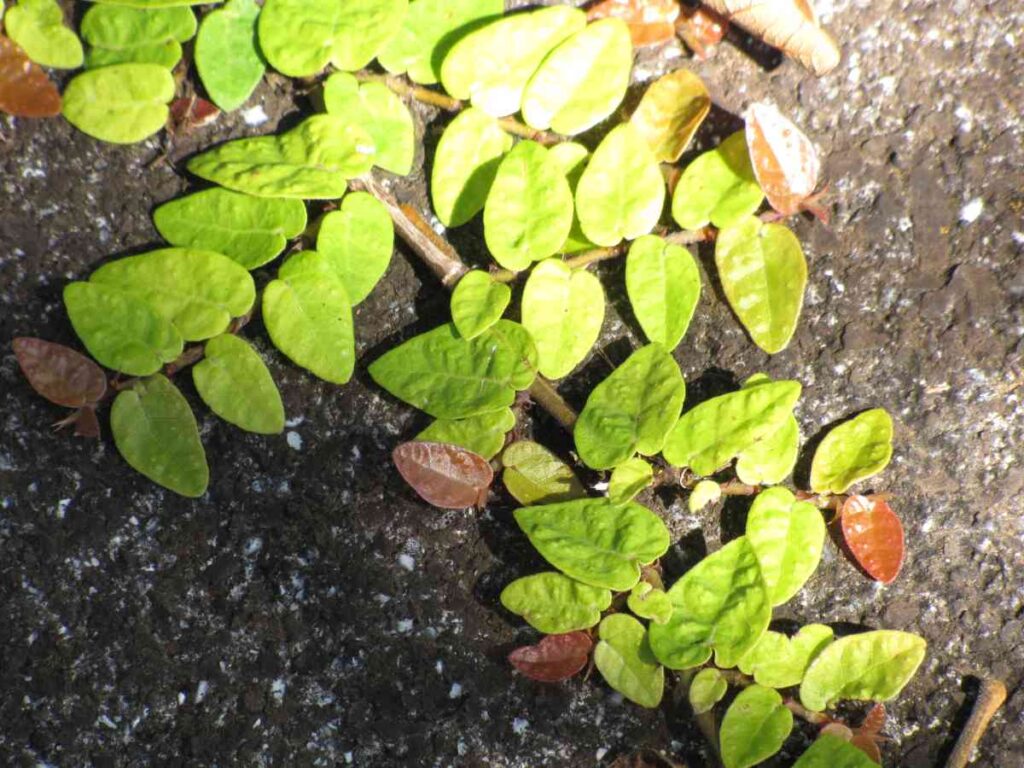
Creeping Fig is a fast-growing, vining plant that clings to surfaces, making it perfect for vertical accents in terrariums. Its tiny, heart-shaped leaves create a dense, textured look as they creep along stones, wood, or glass.
Best in high-humidity, closed terrariums with bright, indirect light, it needs regular pruning to stay under control.
When managed well, it forms a lush backdrop and provides movement, height, and dimension. Creeping Fig brings a wild, organic element to contained spaces.
17. Lucky Bamboo (Dracaena sanderiana)
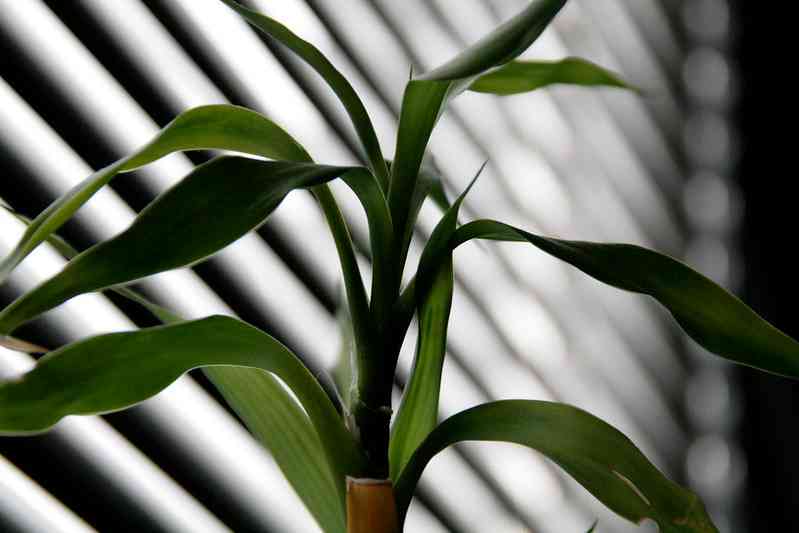
Contrary to its name, Lucky Bamboo isn’t a true bamboo—but its upright, cane-like stems bring structure and a bit of Zen to terrariums.
It thrives in indirect light and humid conditions, often grown in water but also happy in moist soil. Dwarf versions or trimmed stalks fit well in taller glass containers.
It brings symbolic good fortune, a minimalist aesthetic, and surprisingly easy care. Use it as a vertical accent or center-piece in your low-light terrarium design.
Conclusion
Low-light terrariums offer a simple, beautiful way to enjoy greenery in spaces where sunlight is limited. By choosing the right plants—those that thrive in humidity and shade—you can create a thriving miniature ecosystem that’s both low-maintenance and visually striking.
Whether it’s vibrant foliage, trailing vines, or velvety moss, each plant adds its own charm. With just a little care and creativity, your low-light terrarium can become a calming, green retreat that brings life to even the darkest corners of your home.

Khaja Moinuddin, a computer science graduate, finds joy in gardening and homesteading. Join him on this blog as he shares his experiences in homesteading, gardening, and composting